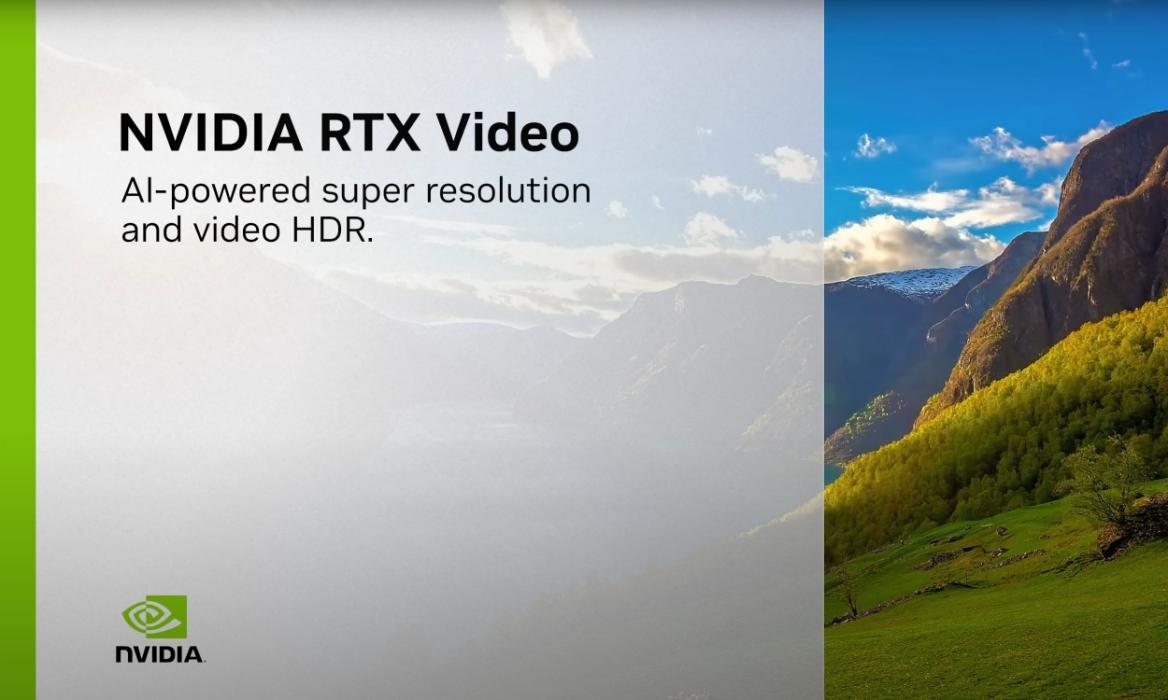
- Nvidia has just released the RTX Video HDR tech, compatible with RTX graphics cards (20 series and above).
- It converts standard dynamic range (SDR) content to high dynamic range (HDR).
- When coupled with RTX Video Super Resolution (VSR), both features can work together to upscale your content and also make it look like HDR.
Nvidia has just released RTX Video HDR. Assuming by the name, it only works for RTX GPUs. Do you know how Nvidia RTX graphics cards feature Tensor Cores? These just became a ton more useful, especially for users with HDR monitors. The difference between HDR and SDR is quite big, as HDR content has much deeper blacks, color reproduction, and brightness.
Tensor cores on RTX graphics cards empower features like DLSS 3.5 and the company’s AI-based frame-generation tech. Apart from the improvements in ray tracing, these other tasty additions make the newer generation GPUs particularly compelling. Previously, Nvidia released RTX Video Super Resolution (VSR), which works to upscale the quality of your video content and uses a deep learning framework.
Similarly, RTX Video HDR is also a new AI-based technology by Nvidia that puts the previously inactive Tensor cores on your Nvidia RTX graphics card to some work. Essentially, Nvidia’s AI is trained to predict what the HDR footage should look like and simulate it for you when enabling RTX Video HDR.
Nvidia’s FAQ states that RTX Video HDR uses AI and the tensor cores present in RTX GPUs to “dynamically remap” SDR footage into HDR10. After enabling the feature, Nvidia RTX Video HDR works in “improving visibility, details, and vibrance of streamed video.”
If you are wondering which graphics cards support the new Nvidia RTX Video HDR technology, any RTX GPU (20 series or later) supports the new feature. That also means this feature isn’t supported in the GTX series. Above, you can check out how it looks in action when used in Call of Duty: Modern Warfare 3.
Keep in mind you would need an actual HDR monitor and toggle the feature to tell the difference properly. At most, the aforementioned image of this feature in action only shows a loose demonstration of sorts. As of now, NVIDIA RTX Video HDR is supported by Chromium-based browsers such as Microsoft Edge and Google Chrome.
How To Enable RTX Video HDR
To turn this feature on, you can simply open the Nvidia Control Panel which is accessible within the right-click menu that pops on your desktop. Then, go to the last menu on the left sidebar titled ‘Video’, and then select ‘Adjust video settings’.
Next, click on the tick-box for High Dynamic Range under the RTX Video Enhancement features. You can also easily enable RTX Video Super Resolution here.
In addition to this, Nvidia says you also need an HDR10-compatible monitor. Plus, you need to enable HDR in your Windows settings. Taking advantage of both RTX video enhancements (VSR and High Dynamic Range) on your RTX graphics card, you will now be upscaling all media watched on the browser and games as well.
When the content is made in SDR, the Tensor cores of your Nvidia RTX graphics card will produce additional dynamic range as well. The result? Standard quality videos are now fully upgraded to look their best. This kind of AI tech works surprisingly better than a lot of the ‘standard’ tools out there right now.
RTX Video Super Resolution, along with RTX Video HDR, are now some of Nvidia’s underrated graphics card features, so do try them out! With that said, do keep in mind that, after all, this is still simulated HDR powered by artificial intelligence.
What are your thoughts on RTX Video HDR? Will you be using features like this on your RTX GPU and putting those cutting-edge Tensor cores to work? Let us know in the comments below!